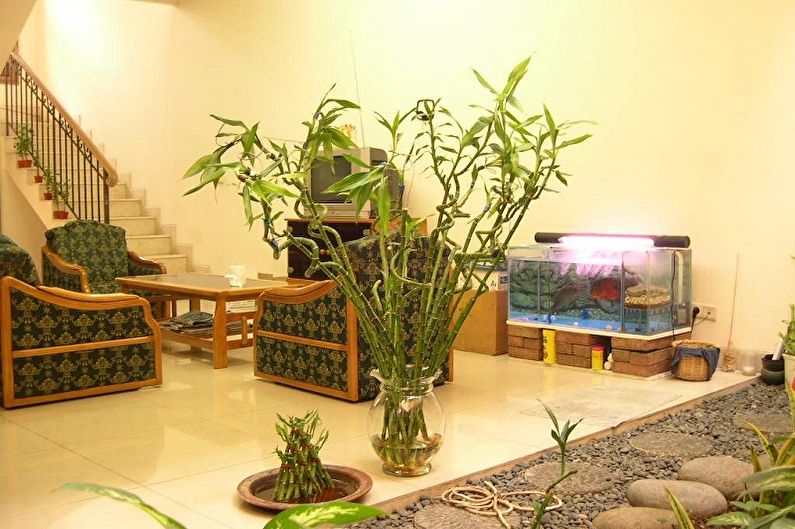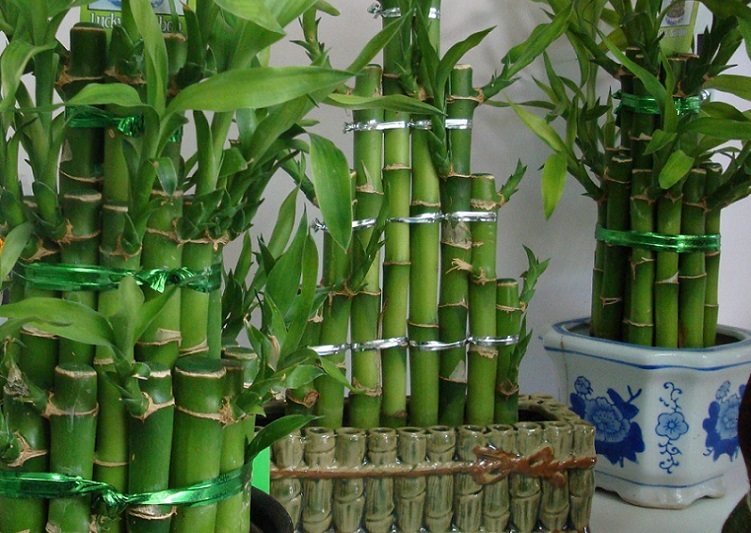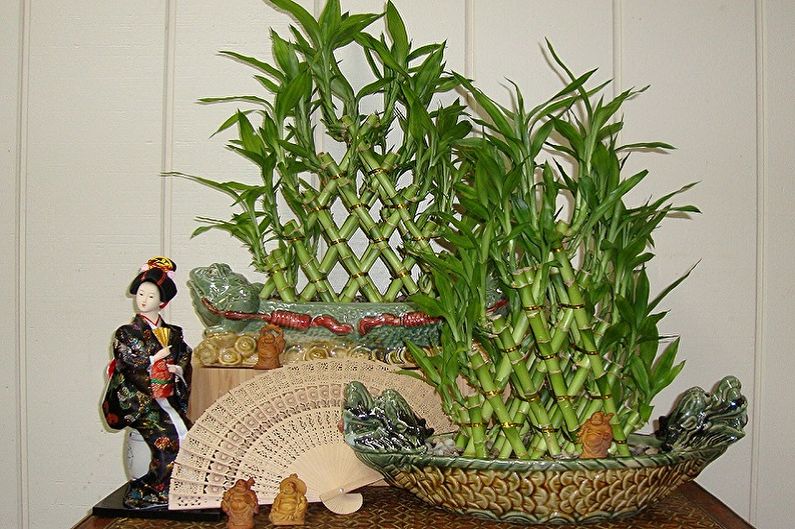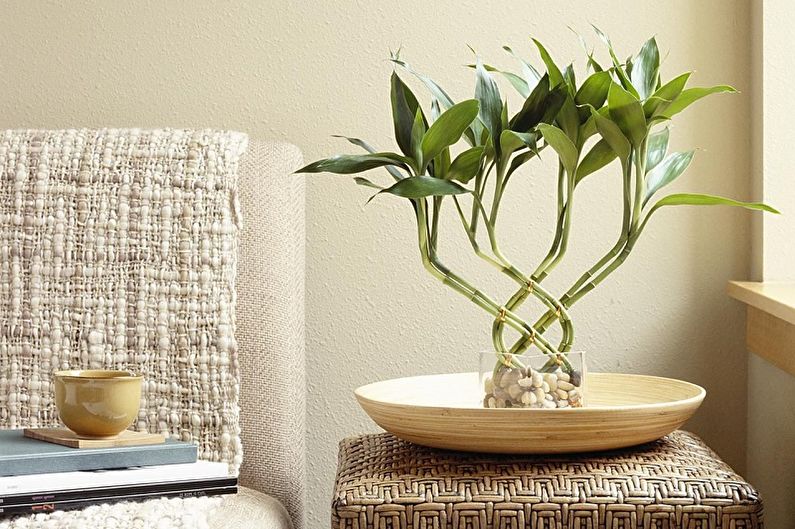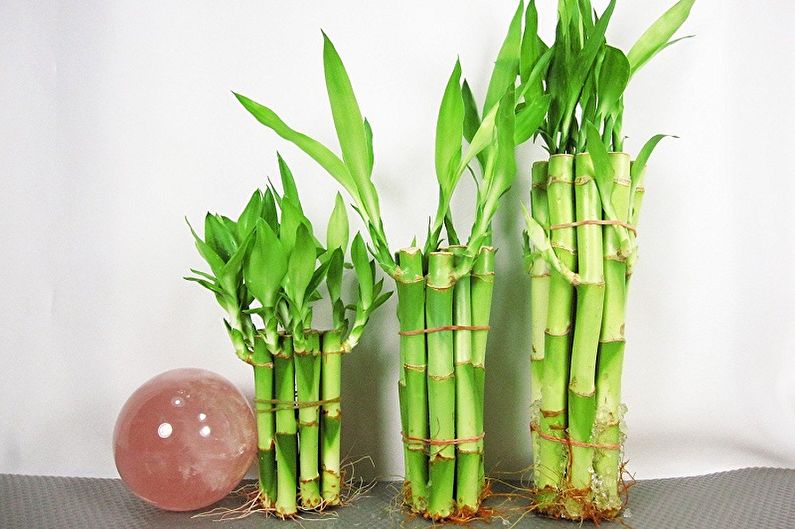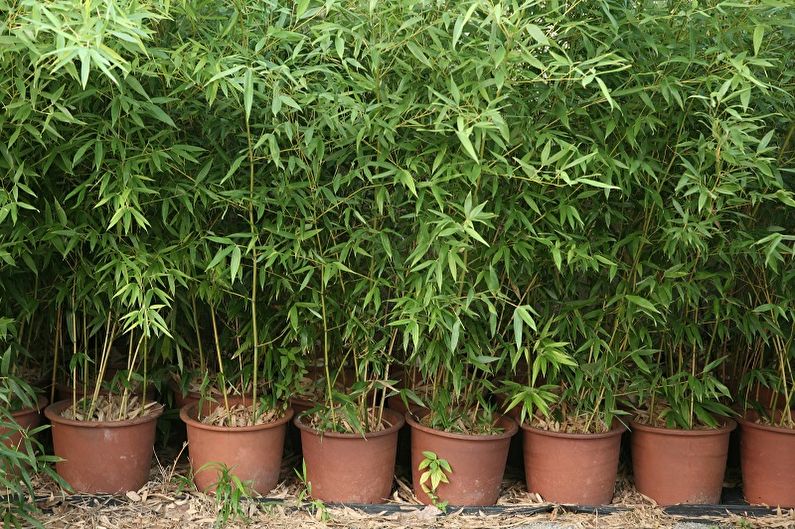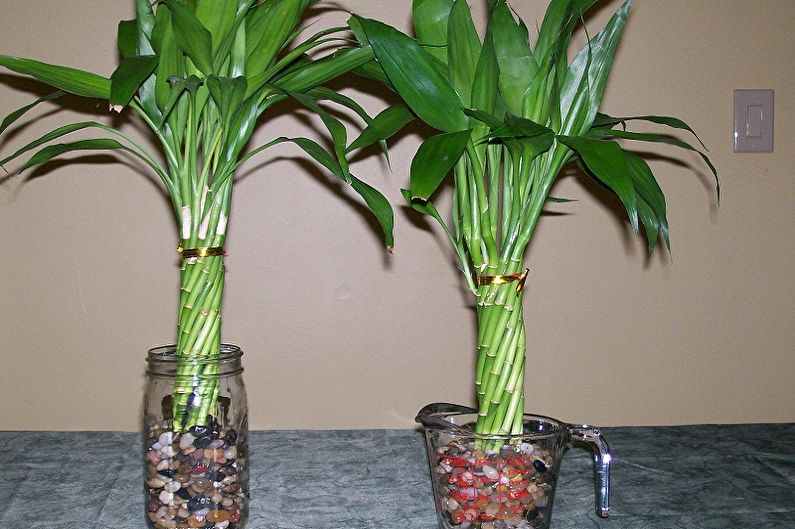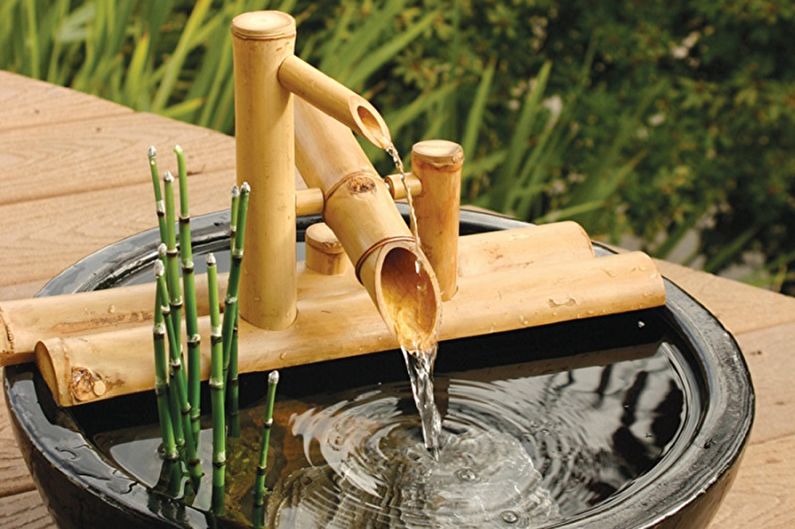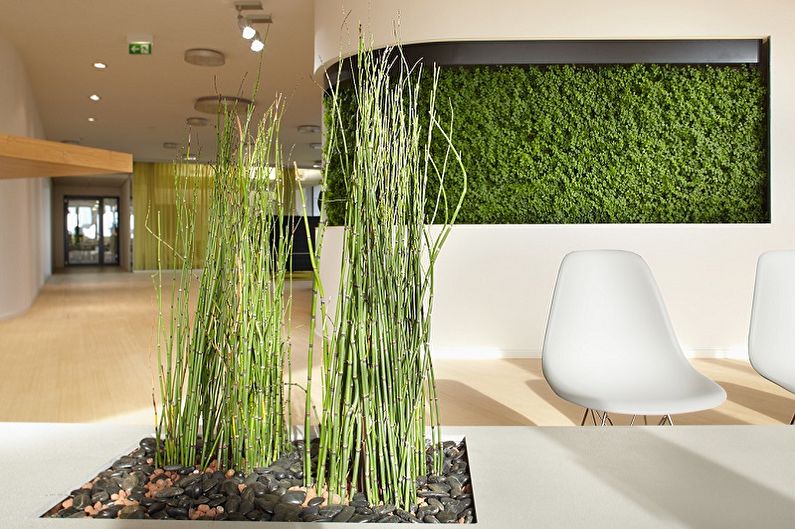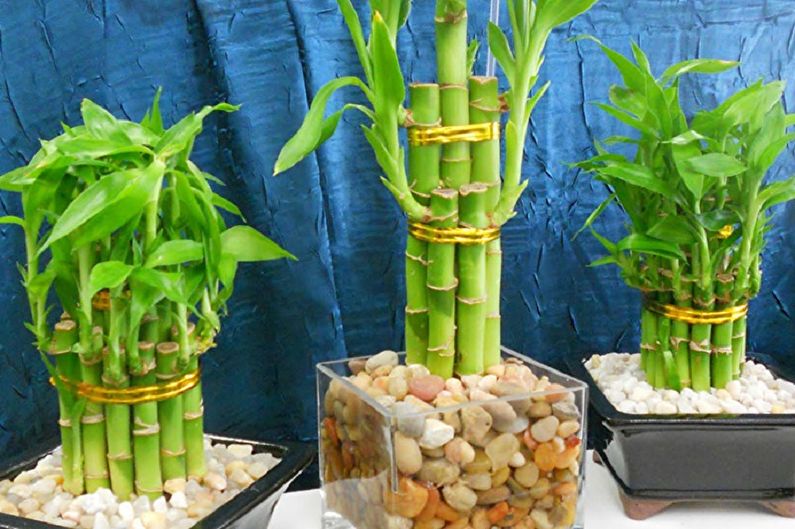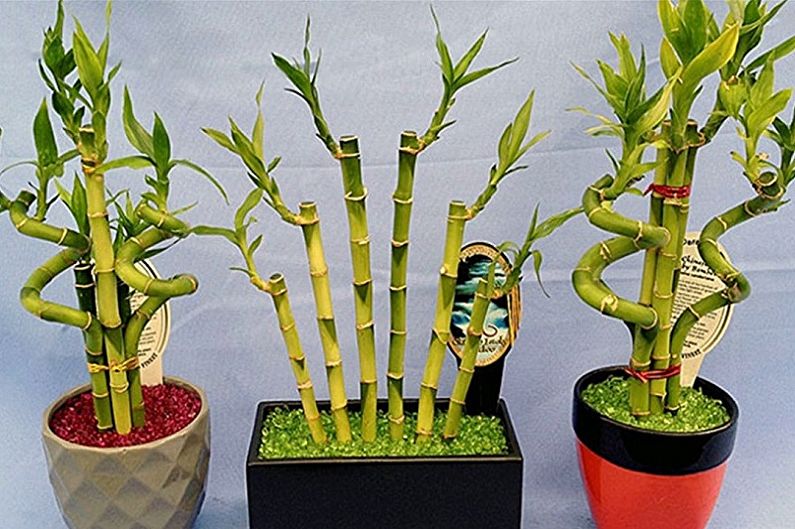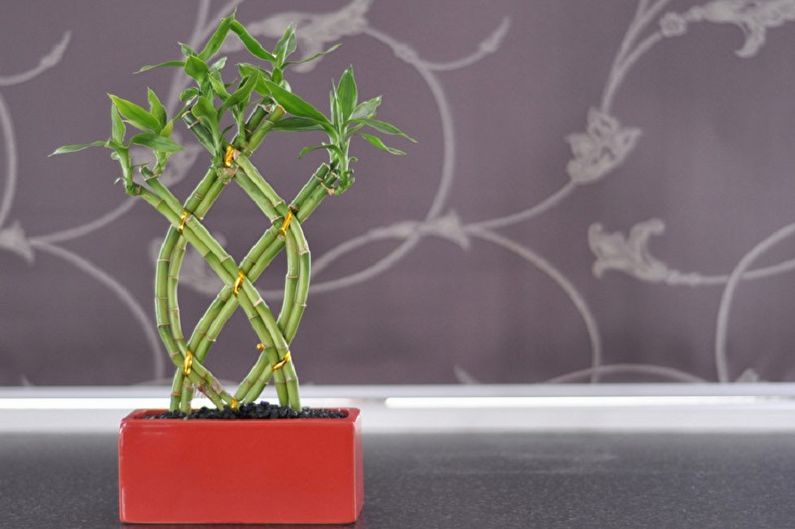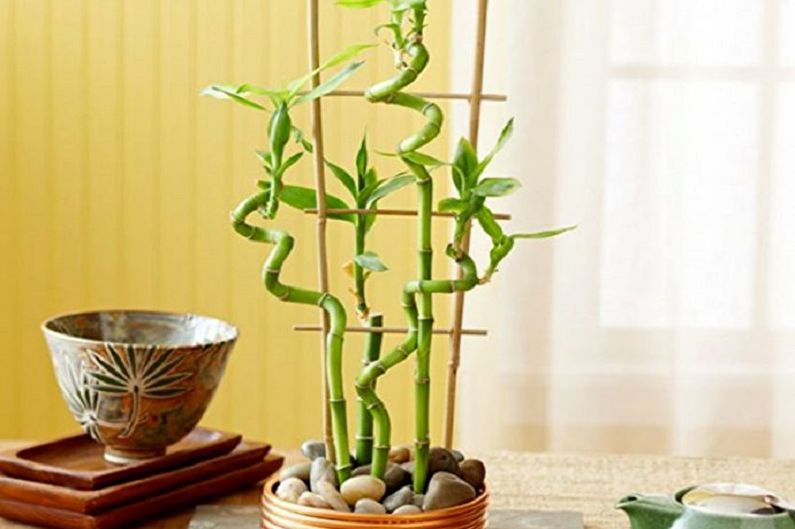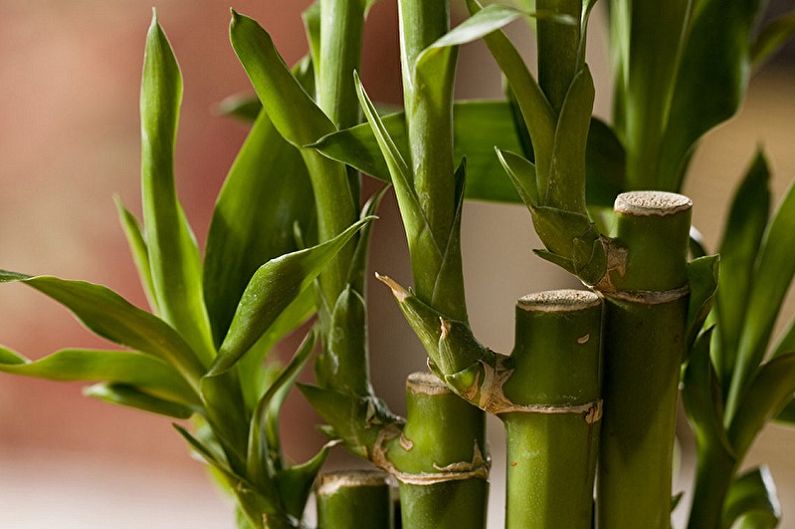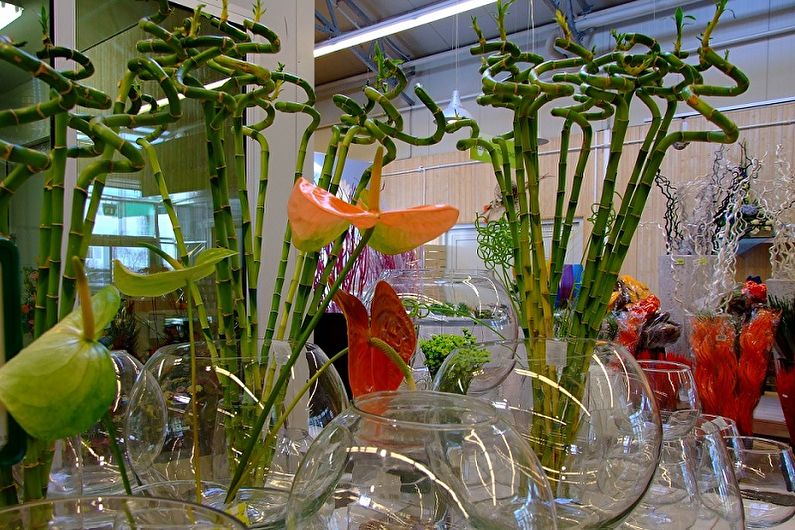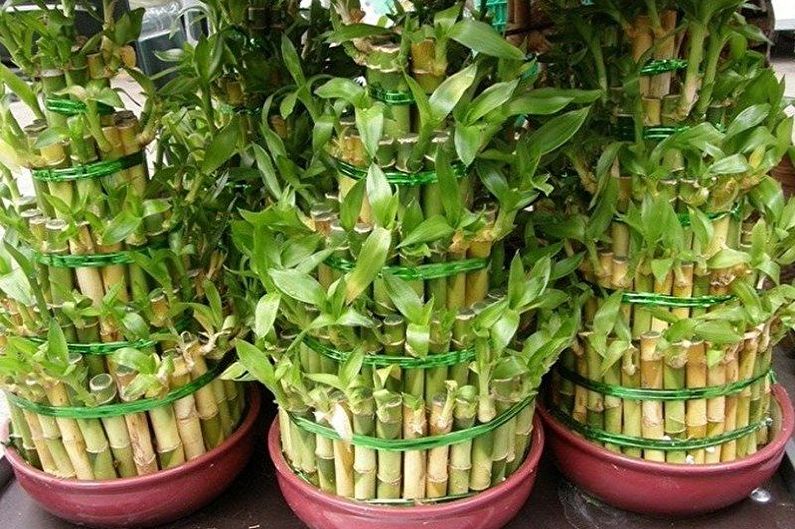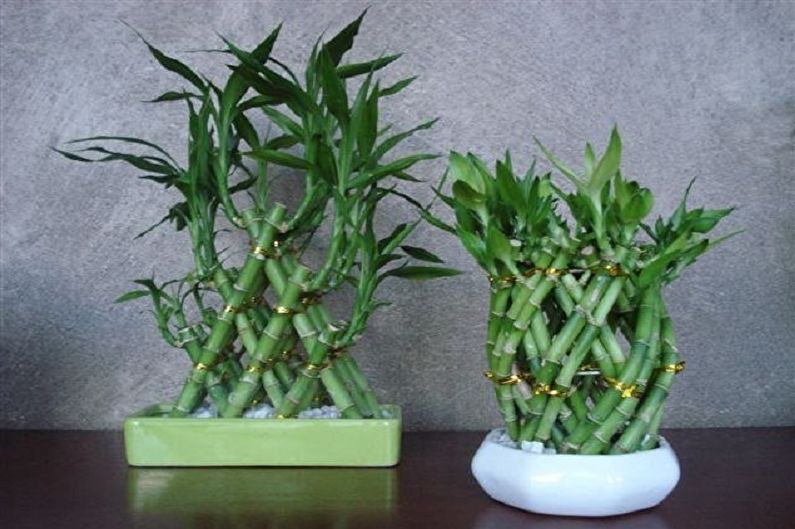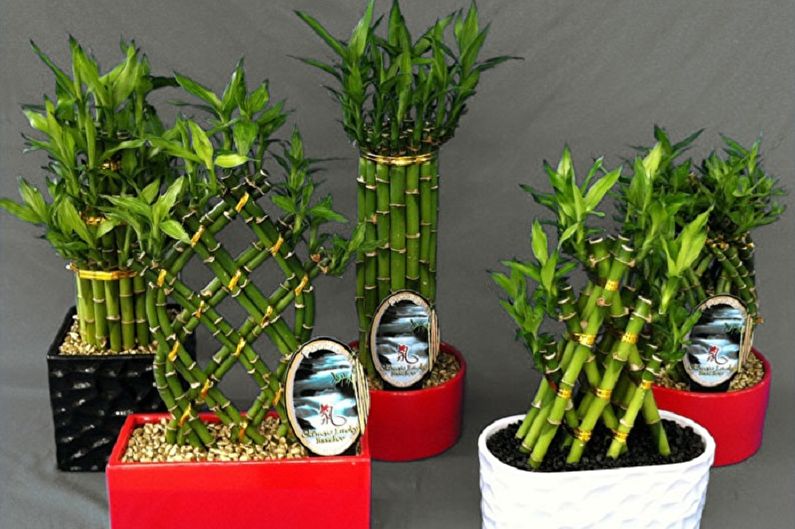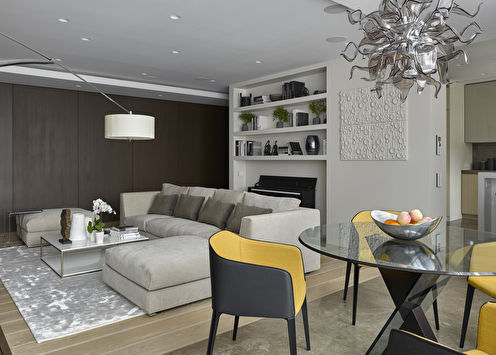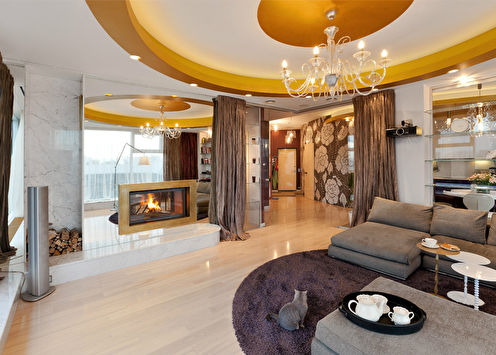
Indoor bamboo is a bizarre group of plants that amaze with their shapes. By and large, this is a bare stem, crowned on the crown with shoots and leaves, which has decorative properties. Despite its tropical origin, the plant is great for growing at home and decorating interiors. It does not have exquisite flowering, but attracts with its unique originality of a hollow columnar-shaped glossy trunk and lanceolate leaves.
The main types
Especially spectacular looks bamboo, which is grown in containers with water. Moreover, not only the plant, but also a stylish transparent vase filled with beautiful pebbles plays a special role in the composition. In this case, it is necessary to completely change the water twice a month, adding liquid fertilizers.
In addition to excellent aesthetic indicators, indoor bamboo has fans thanks to its unpretentiousness in care. It requires only the most necessary - lighting and watering, which are the necessary components of his life.
Various types of indoor bamboo are classified by their height and are divided into three main groups, namely:
Low - these include plants no higher than a meter. The most interesting varieties are Tsuboy with white stripes and Golden Goddess with fern-like foliage;
Medium - varieties that can grow up to 3–3.5 m. Bright representatives - a very beautiful variety “Shiroshima” with green and white foliage, as well as “Mexican weeping bamboo” with narrow, elongated light green leaves;
Tall - rarely found in interiors, as they extend up to 6 m. An example of this group is the "Tropical Black Bamboo" or "Monastic Bamboo", which has elegant shapes.
Indoor bamboo often means dracaena Sander or, as it is also called, "bamboo of happiness." This name was given to the plant by the teachings of Feng Shui, according to which culture attracts luck and money. It can often be found in interiors, living in pots or in transparent vases with water.
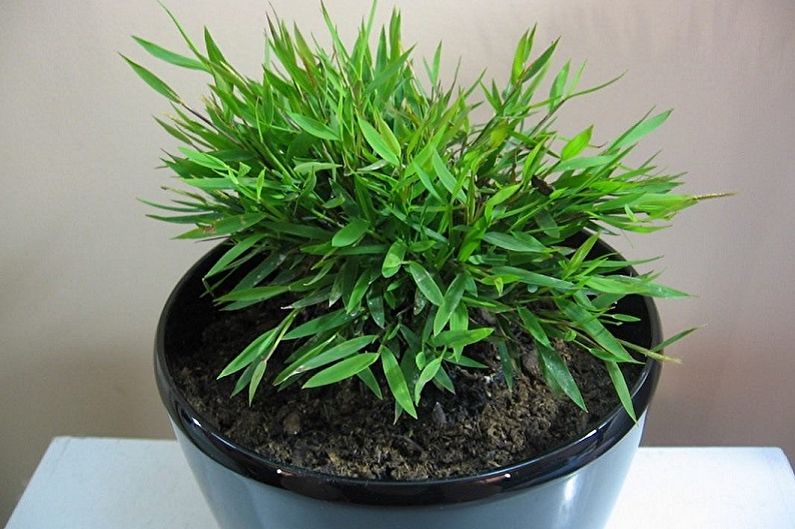
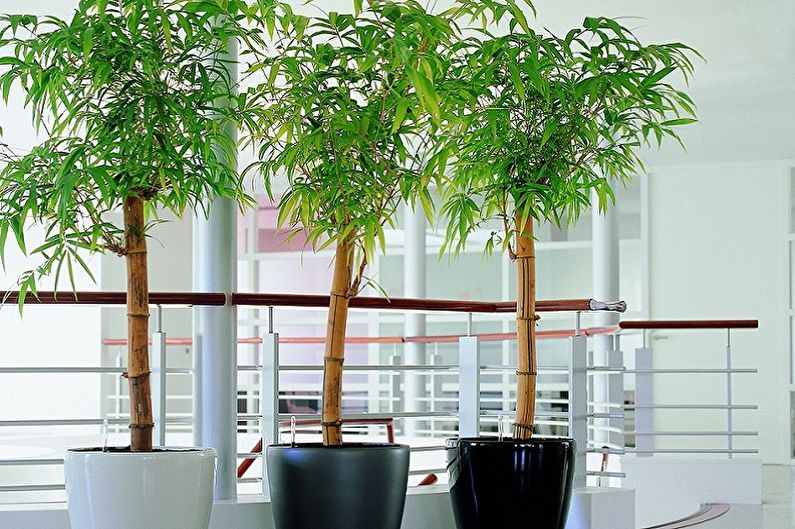
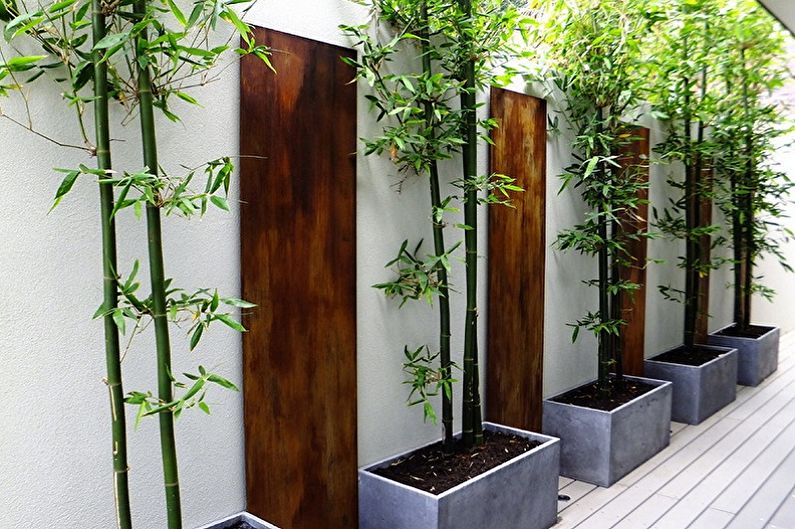
Proper bamboo care
Those who already own this wonderful plant claim that caring for it does not bring much difficulty. He needs to choose the right place of residence and create comfortable conditions that in the conditions of the apartment will not be difficult. Timely watering and fertilizing will be good stimulants in the growth of bamboo.
Lighting
Indoor bamboo needs high-quality lighting, but poorly tolerates direct ultraviolet rays. The place in the apartment for him needs to be selected bright, but with darkening in the midday heat. The role of such temporary protection is easily handled by blinds that are left in a half-closed position, or tulle. When the day decreases (in the autumn-winter period), bamboo can be additionally illuminated with special phyto-lamps, however, such a need arises extremely rarely. In most cases, a culture that is in a state of wintering is sufficient for what it is.
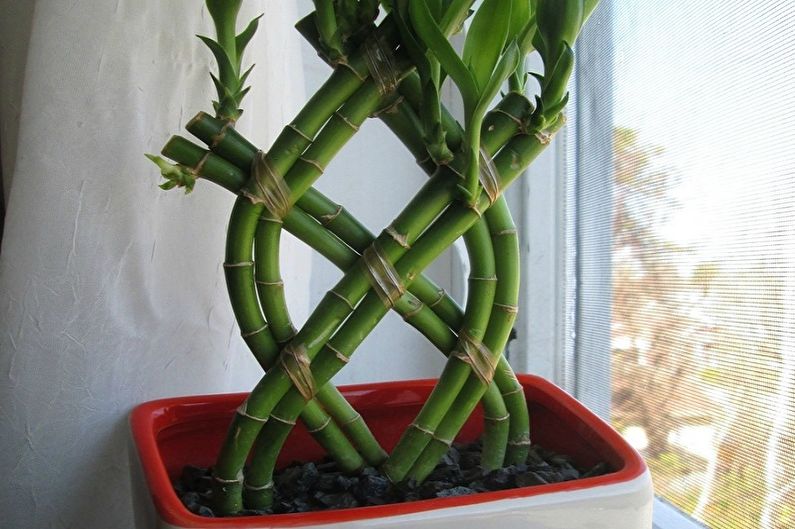
Temperature
Indoor bamboo refers to heat-loving plants. The cool atmosphere instantly affects the decorative properties of the leaves - they will darken and curl. The optimum temperature regime is + 22 ... + 32C. During wintering, its lowering is allowed, but not less than + 15C. In summer, you should not be afraid to take indoor bamboo to fresh air - this will benefit him.
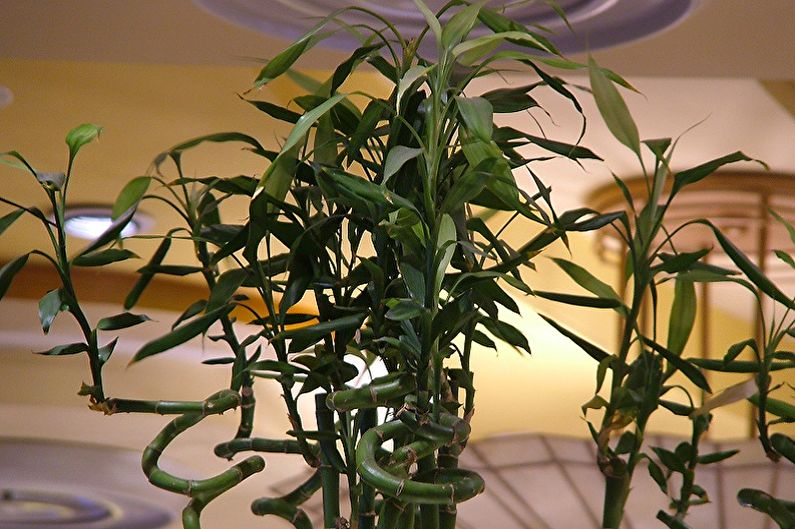
Humidity
The culture needs moderate humidity, but not waterlogging.When planting it in a new container, you need to take care of drainage, which will prevent stagnation of moisture in the soil and, as a result, rotting of the root. In hot summers, in addition to regular watering, you can spray the foliage with settled water from the spray gun. With the beginning of the heating season, the plant is moved away from heating and incandescent appliances, as they dry the air.
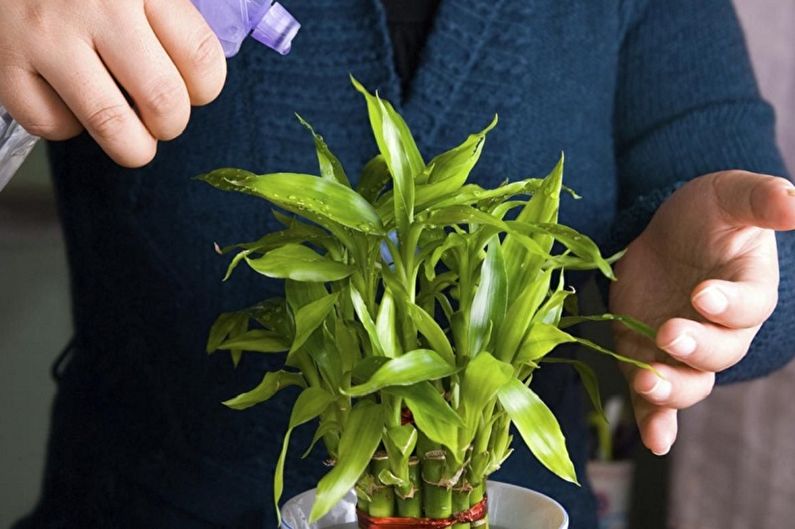
Watering
In the hot summer months, indoor bamboo needs to be watered frequently and make sure that the soil does not dry out. In winter, as well as in the off-season (autumn - early spring), watering is reduced. Violation of the watering regime will be signaled by the yellowed tips of the leaves. It is worth noting that the chlorine in running water can cause irreparable harm to the plant, so they use standing water for irrigation, the best option is rain.

Fertilizers and fertilizing
Regular top dressing gives good results in growing bamboo. Fertilize the soil twice a month. It can be liquid organic compounds, peat-based mixtures or acquired complex mixtures of mineral fertilizing. Bamboo living in the aquatic environment also needs to be replenished - it needs to be fed once a quarter.
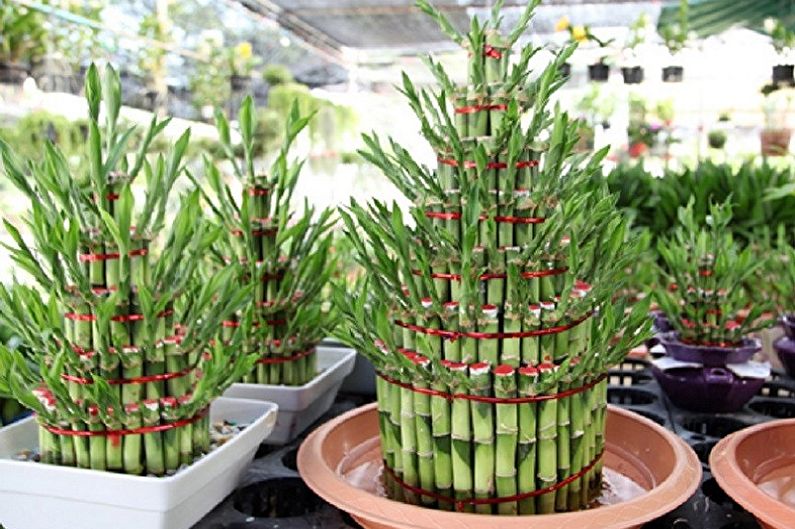
How to curl a bamboo stalk
Indoor bamboo is often attracted by the curved spiral shape of the trunk, giving it a special originality. It is quite possible to form it at home, choosing one of several methods.
For example, having planted a young stalk in a container, they completely cover it with a box, having previously made a small “window” in it. The sprout will tend to grow towards the luminous flux penetrating through the hole, and the owners will only need to rotate the structure periodically, changing the angle of light supply. However, such a process of forming a twisted stalk lasts a long time, since one turn is obtained in a year.
Another way is to curl the stem around the support when the young shoot is fixed to it with wire. When the curled sprout gets stronger, the structure is removed.
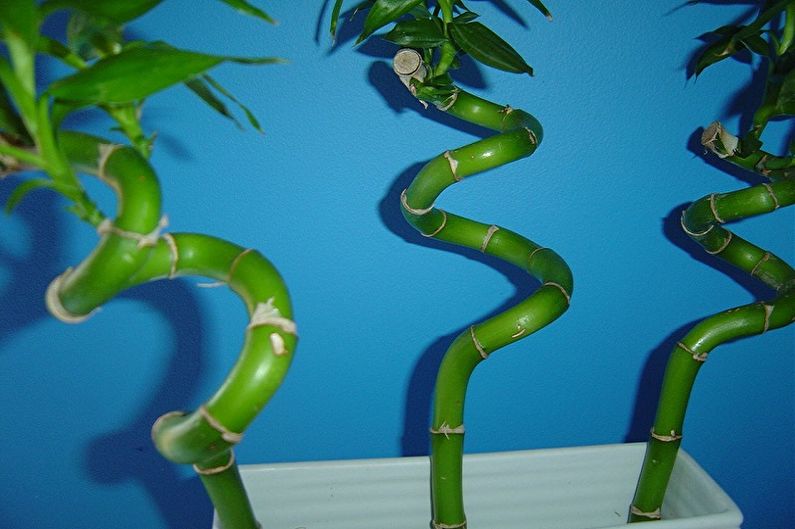
Diseases and Pests
If you comply with all the above conditions of care, you can avoid most ailments that affect indoor bamboo. If foliage twisting is observed, its weakening is a signal that the plant is frozen and requires additional heating. Stunting may indicate a lack of nutrients or lighting. In this case, you can make moderate dressing with fertilizer compounds and move the pot closer to the light source.
A yellowed shoot indicates overmoistening of the soil and the danger of rotting of the root system. The affected segment is removed and proper care is restored. If rusty blots are visible on the leaves - most likely, the plant is affected by a fungus. In this case, he needs fresh air and fungicide treatment.
In addition to diseases, indoor bamboo can suffer from harmful insects, the most dangerous of which are ticks and aphids. You need to fight them with the help of special solutions that destroy pests.
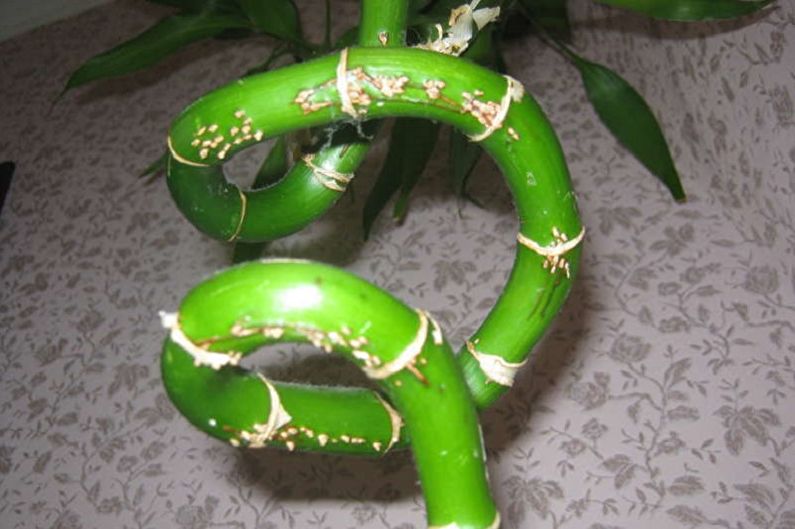
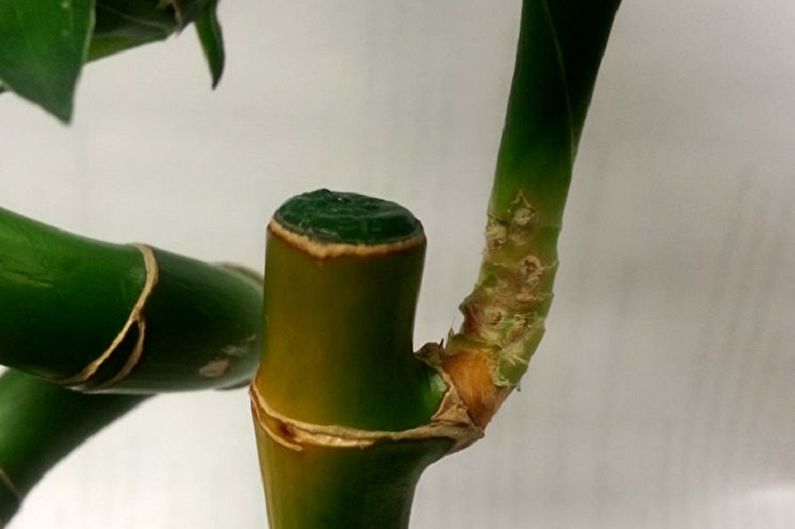
How to transplant indoor bamboo
Young plants need to "increase living space" annually, replanting them in more spacious containers. Adults undergo this procedure much less often - it is enough to transplant them every three years. The most comfortable bamboo tolerates transplantation and is best established in the new environment, if the process is carried out in April and May. It is important to consider that fertilizers do not need to be added to the soil at this time - the first top dressing with mineral composition is carried out three weeks later. Fertilizers are bred with prepared water for irrigation.
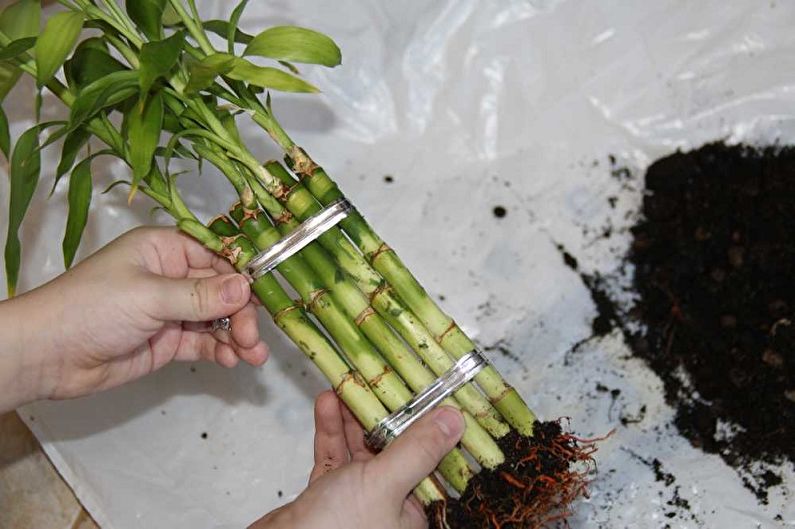
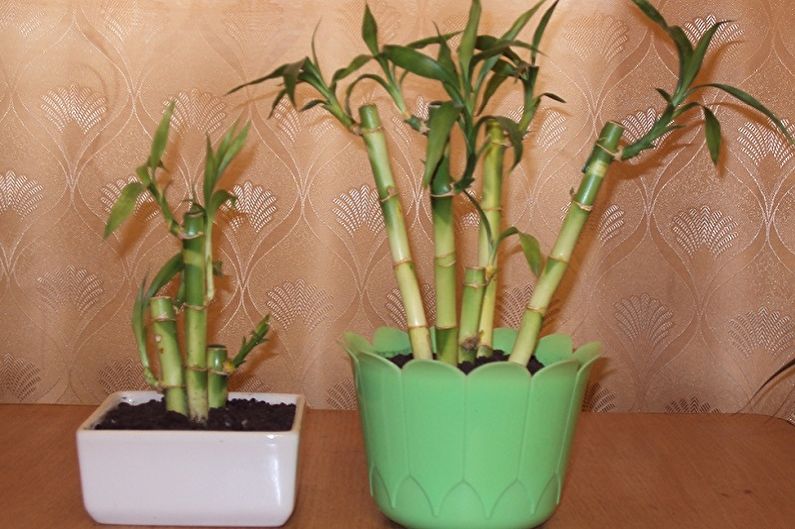
Propagation at home
There are three main ways to propagate bamboo yourself. Each of them has its own characteristics and rules, strict adherence to which often leads to a successful outcome.
Propagation of bamboo seeds
Breeding indoor bamboo seeds is considered a rather complicated process, rarely giving the desired result, but you can still try. First, seeds must be thoroughly soaked in moist gauze, waiting for their seedlings. Small seedlings are transplanted into a container with a prepared substrate and drainage layer.
It is necessary to create greenhouse conditions by equipping the cover - this is an important condition for a successful outcome, otherwise the absence of a microclimate with an increased level of humidity and heat will lead to loss of germination. The greenhouse is aired several times a day, and watering, more precisely, spraying is carried out once a day. When the seedlings grow to a mark of 5 cm, the strongest of them are selected and planted in separate containers, where they will continue their development.
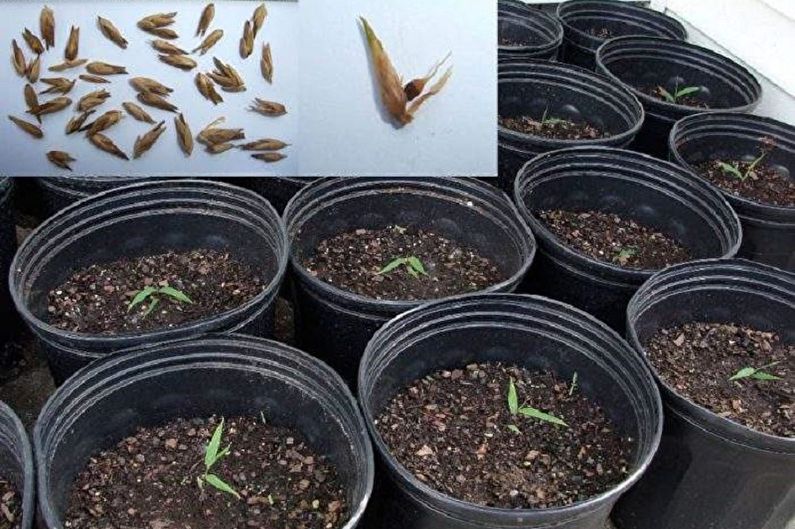
Propagation of bamboo by cuttings
Cuttings are carried out in the process of transplanting indoor bamboo. The material is separated and planted in the soil, with each shoot planted in its own separate pot. A prerequisite for the first weeks of rooting is abundant watering, which is then reduced, and seedlings must be preserved from a lot of sunlight. To create favorable conditions, the cuttings can be covered with plastic containers. Sometimes they are simply planted in water.
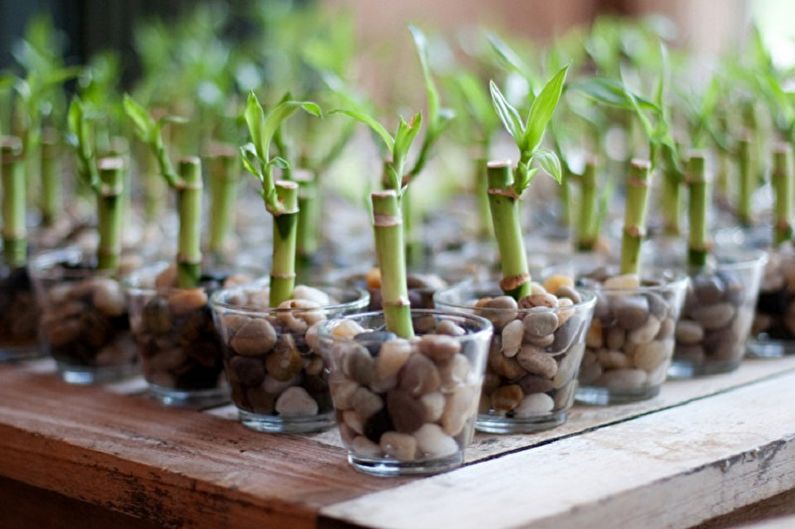
Propagation of bamboo by dividing the root
This method is considered the simplest, and the new material takes root without any problems. There are two options - to cut the rhizome or simply, digging a little soil, separate the necessary part. And in that, and in another case, you need to take into account that on each segment separated for planting, several buds or shoots must be present. From one bamboo you can get several new representatives. Often, such an operation is performed during a transplant.

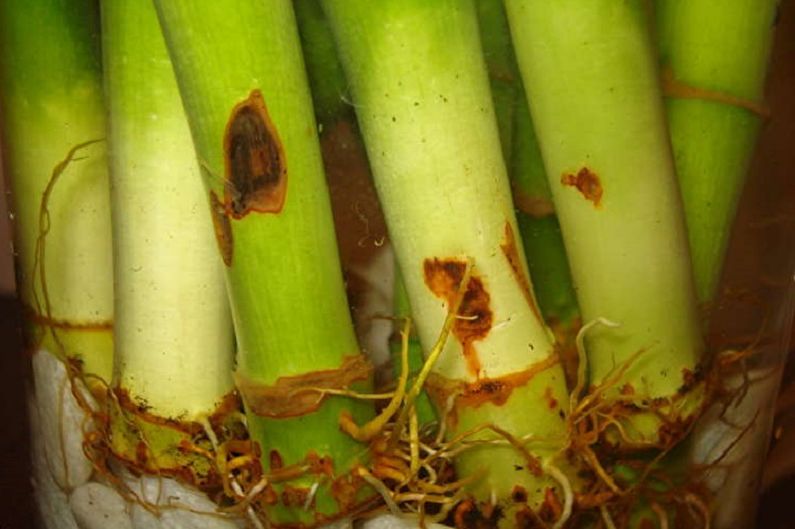
Indoor bamboo - photo
To learn more about the original indoor bamboo, its varieties and its role in landscaping, we suggest you visit our gallery. Here are collected a lot of high-quality photos that will not leave indifferent even those who are not keen on home floristry. Enjoy watching!
